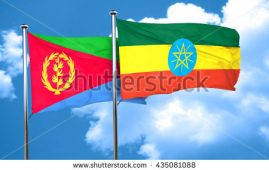EXPERTS are calling it the African “Smack Track”: a circuitous route to smuggle heroin from Afghanistan to Europe, passing through east Africa. Two drug busts in November, netting 712kg of the stuff, closed a record year for heroin seizures off the coast of Kenya. The haul is less a sign of improved policing and more evidence of the growing importance of the route.
The largest seizure took place in April, when an Australian warship found more than a tonne of heroin hidden among sacks of cement on a dhow in international waters. As routinely happens on the high seas, the drugs were dumped overboard, while the crew and vessel were allowed to go. The discovery, with an estimated street value of $240m, was equivalent to all the heroin seized off east Africa between 1990 and 2009.
Most heroin from Afghanistan travels to Europe by two main routes: a northern one through Central Asia and a western one via Iran. The minor “southern route” through east Africa has existed since the 1980s, but last year’s seizures—totalling some 3,500kg, according to the UN Office on Drugs and Crime (UNODC)—point to a growth in traffic.
Alan Cole of UNODC says the shift was caused by “improved law enforcement in central Europe and the conflict in Syria”. Stricter border-security checks along the Balkan Route, combined with the increasing risk of getting caught up in expanding wars in the Middle East have made the overland passage less attractive.
Instead smugglers have taken to the seas. Shipments of heroin are unloaded from dhows and cargo ships off the shores of Kenya and Tanzania, and taken ashore on small speedboats. They are then broken up into still smaller packages before being “muled” to Europe from international airports in Kenya and Ethiopia. Sometimes they are consolidated and sent by lorry to South Africa for onward shipping. Some of the heroin enters the African market to feed nascent demand, particularly in Zanzibar, Mombasa and Dar es Salaam, where heroin use is slowly rising. Heroin is also smuggled to consumers in South Africa and Nigeria.
In Kenya and Tanzania criminal gangs with close ties to political and security elites control the trans-shipment. The risk is that state institutions will be hollowed out or, worse still, that states could be captured by transnational criminal networks. A 2011 research paper by the International Peace Institute, a think-tank in New York, said the foundations of the Kenyan state were “under attack” from such gangs.
That same year America designated seven people, including the then Kenyan MP, John Harun Mwau, as “narcotics kingpins” under legislation that freezes the American assets of alleged drug lords and denies them access to the American financial system. Mr Mwau denies the charge and claims America is trying to seize his profitable supermarket businesses.
Last summer President Uhuru Kenyatta issued orders for a seized ship, and its cargo of heroin, to be towed out to sea and blown up—against the protestations of Mombasa’s chief magistrate and a ruling from the High Court, which was hearing the trial of nine crew members arrested on the vessel. The MV Al Noor, a rusting vessel, had set off from the Makran coast in south-west Pakistan and was intercepted by Western naval forces patrolling the Indian Ocean to deter Somali pirates and interdict smugglers of people.
Western countries worry about the parallel with the cocaine-smuggling trade that developed in west Africa in the mid-2000s. As authorities clamped down on the trans-Atlantic cocaine route the smugglers shifted southward to west Africa, where weak states were easily subverted and drugs money has fuelled endemic corruption. Countries including Ghana, Mali and Senegal became—and remain—key trans-shipment points for South American cocaine bound for Europe. Some is also routed through South Africa. Tiny, poor, coup-prone Guinea-Bissau has been branded Africa’s first “narco-state”.
*********
Source: The Economist – Jan 17th 2015





